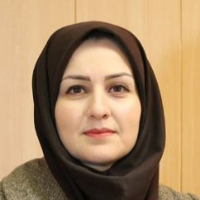The analysis of effective Wayfinding and Pathfinding process in the old cities in Iran
Author(s):
Abstract:
Wayfinding is individual ability to achieve spatial destination in the new and complex settings, as easy and fast as doing this in familiar environments. Wayfinding play an important role, in public places such as shopping malls, airports, railway stations, schools, hospitals and etc, Although when direction losing is discussed in various places, frustration and fear feelings are expressed. Recognizing that in a set of different and complex functions, individuals location and how they reach their distiantions, are inevitable which is necessary cities and large-scale buildings planning process.With the application of structural elements which increases spatial legibility and imageability and provide clear and perceptible spatial information, infact provide conditions which individuals spend the minimum time and energy and stresslessly to reach the intended aim. The field of Wayfinding and Pathfinding process hasnt been investigated in past cities of Iran, only in some sources referred to landmarks,they can contribute to recognizing direction. this survey investigates this issue for the first time and this process along with pathfinding is considered to emphasize on wayfinding concept as the spatial problem solving. From the seventies up to now, considering this feature capability and its improvement are fundamentally mentioned as the main research subjects in different sections such as urbanism, architecture, environmental psychology and so on.The purpose of this research is to find the elements and spatial properties to facilitate the wayfinding process in old cities in Iran and to find an answer to this question, "Could the components of spatial legibility considered in todays urban design discussions, be found in the structures of Irans old cities? The current research and its fundamental and the related results can be practically analyzed. Therefore, they are performed at three stages: The first one is associated to document or library studies that includes analyzing the concepts of wayfinding and pathfinding, sorting the researchers findings in the field of urban design concerning physical elements of the structures of Irans old cities. The second one is a case study that, includes reviewing the structures of three old cities in Iran, namely Zavareh, Tabriz and Shiraz ; At the third stage, the analysis of the mentioned findings and conclusion will be discussed. It is concluded that legibility, spatial continuity, spatial contrast and spatial sequences are basically considered the most important factors to facilitate the process of wayfinding and pathfinding in the old cities of Iran. According to the mentioned factors which are used in the design of cities and regions and even in contemporary public buildings, there are some advantages for users include: - Facilitating and quick access to spatial destinations. - Increasing the attraction of urban spaces and creating the variety in urban facades and configurations - Losing disappointment,hopelessness, anxiety sensation due to being lost and losing position and direction for people. - Increasing the security spatial sensation and peoples presentation in public settings with different skills and capabilities.
Keywords:
Language:
English
Published:
Bagh-e Nazar, Volume:13 Issue: 41, 2016
Pages:
67 to 82
https://www.magiran.com/p1592684
سامانه نویسندگان
مقالات دیگری از این نویسنده (گان)
-
Examining Women’s Needs and Preferences in the Semi-Public Spaces of High-Rise Gated Communities
Sara Anbari, Seyed Abbas Yazdanfar *, Seyed Hadi Ghoddusi Far,
Bagh-e Nazar, -
A Comparative Study of Conventional Architectural Design Methods and Adolescent Personality Types based on MBTI Components
Zeinab Moghaddas, Azadeh Shahcheragi *, Hossein Zabihi
Karafan, Winter 2025



